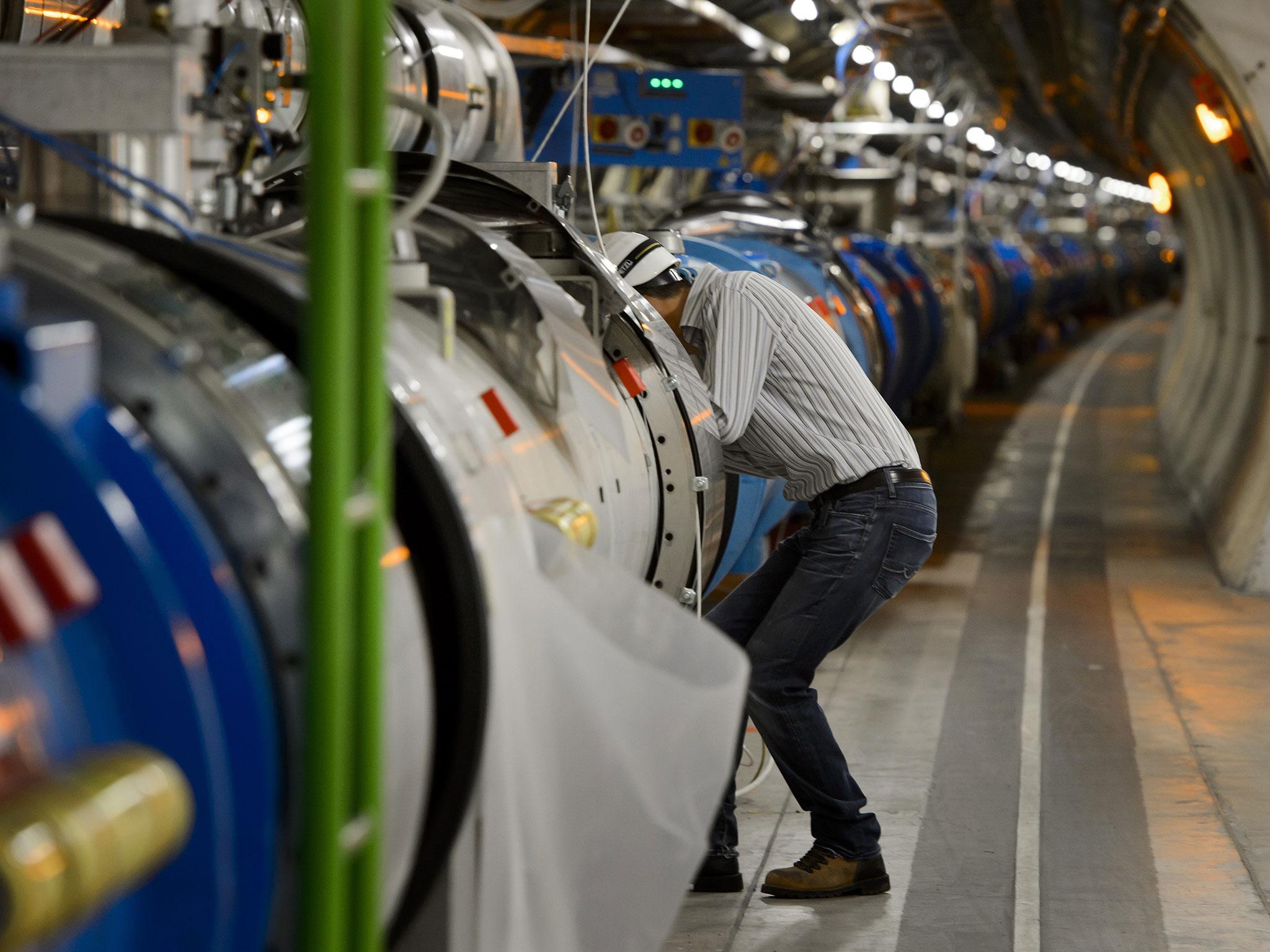Large Hadron Collider finds five new subatomic particles, shedding light on what makes the universe work
The particles were ‘hiding in plain sight’, the team said

Scientists have stumbled on five new subatomic particles, helping to illuminate some of the most fundamental parts of the universe. The particles had been “hiding in plain sight”, according to one of the researchers that found them.
Researchers working on the Large Hadron Collider, Europe's giant atom-smasher, ran into the special particles while working on the LHCb experiment, also known as “the beauty experiment”, which is exploring what happened just after the Big Bang that gave birth to the universe.
By measuring their properties, physicists hope to gain greater insight into the strong nuclear force that binds the building blocks of atoms together.
The LHC, the world's largest particle accelerator, is built into a seven-mile circular underground tunnel straddling the Swiss-French border near Geneva.
In July 2012, LHC scientists made history by capturing the fabled Higgs boson, dubbed the “God particle”. The Higgs boson gives matter mass and was a fundamental piece of the universe that had been missing since British physicist Peter Higgs predicted its existence in the 1960s.
The new particles are not quite as exciting but still constitute a significant find.
Professor Tara Shears, from the University of Liverpool, a leading member of the “beauty” team, said: “These particles have been hiding in plain sight for years, but it's taken the exquisite sensitivity of LHCb's particle detectors to bring them to our attention.”
The five particles are all baryons – subatomic particles made up of three smaller units called quarks.
Quarks, one of the basic building blocks of matter, come in six “flavours” known as up, down, strange, charm, top and bottom.
The newly discovered particles are high-energy versions of the omega-c baryon, a particle made up of two strange quarks and one charm quark.
Additional reporting by agencies
Join our commenting forum
Join thought-provoking conversations, follow other Independent readers and see their replies
Comments